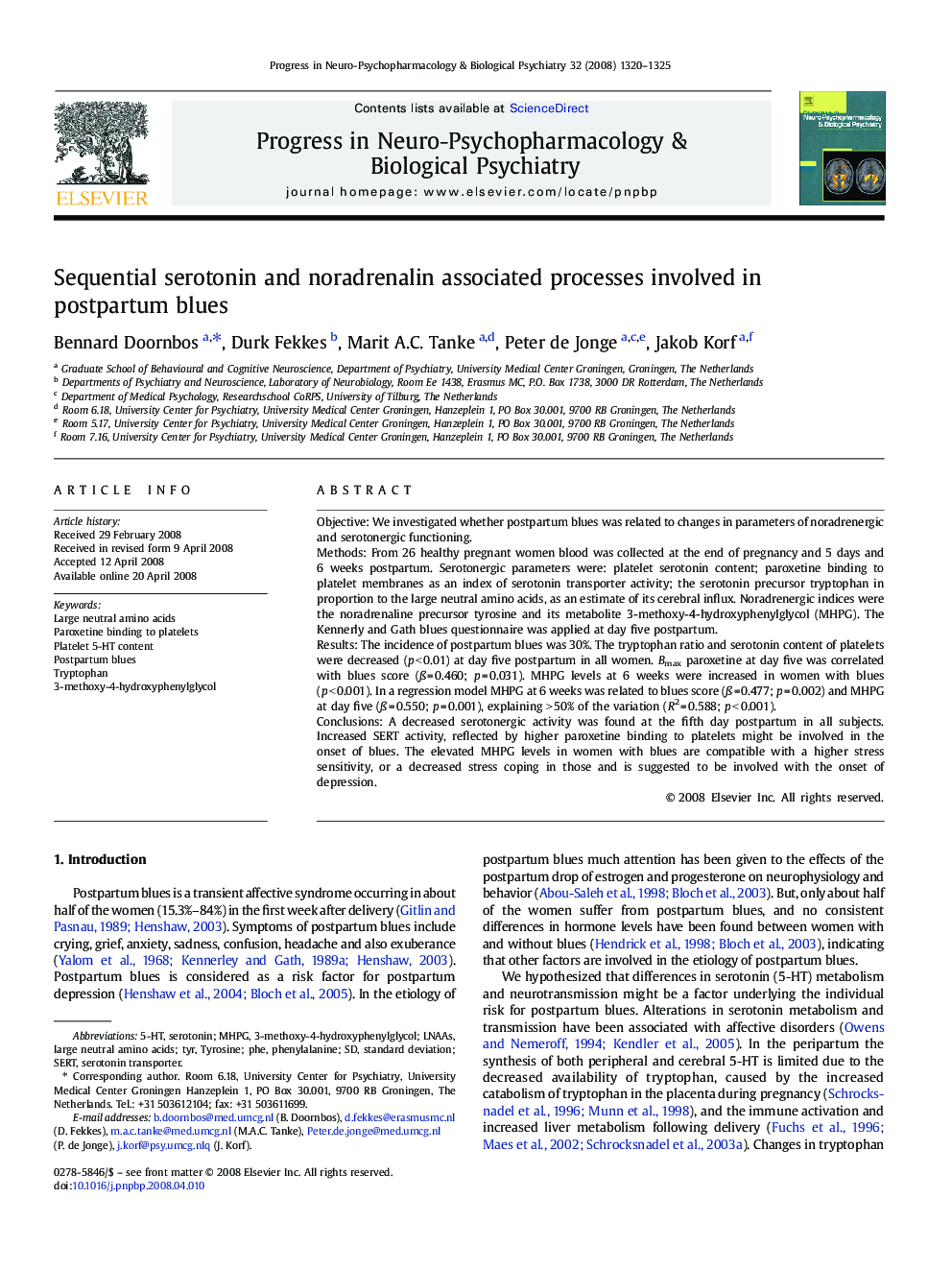| Article ID | Journal | Published Year | Pages | File Type |
|---|---|---|---|---|
| 2566600 | Progress in Neuro-Psychopharmacology and Biological Psychiatry | 2008 | 6 Pages |
ObjectiveWe investigated whether postpartum blues was related to changes in parameters of noradrenergic and serotonergic functioning.MethodsFrom 26 healthy pregnant women blood was collected at the end of pregnancy and 5 days and 6 weeks postpartum. Serotonergic parameters were: platelet serotonin content; paroxetine binding to platelet membranes as an index of serotonin transporter activity; the serotonin precursor tryptophan in proportion to the large neutral amino acids, as an estimate of its cerebral influx. Noradrenergic indices were the noradrenaline precursor tyrosine and its metabolite 3-methoxy-4-hydroxyphenylglycol (MHPG). The Kennerly and Gath blues questionnaire was applied at day five postpartum.ResultsThe incidence of postpartum blues was 30%. The tryptophan ratio and serotonin content of platelets were decreased (p < 0.01) at day five postpartum in all women. Bmax paroxetine at day five was correlated with blues score (ß = 0.460; p = 0.031). MHPG levels at 6 weeks were increased in women with blues (p < 0.001). In a regression model MHPG at 6 weeks was related to blues score (ß = 0.477; p = 0.002) and MHPG at day five (ß = 0.550; p = 0.001), explaining > 50% of the variation (R2 = 0.588; p < 0.001).ConclusionsA decreased serotonergic activity was found at the fifth day postpartum in all subjects. Increased SERT activity, reflected by higher paroxetine binding to platelets might be involved in the onset of blues. The elevated MHPG levels in women with blues are compatible with a higher stress sensitivity, or a decreased stress coping in those and is suggested to be involved with the onset of depression.
